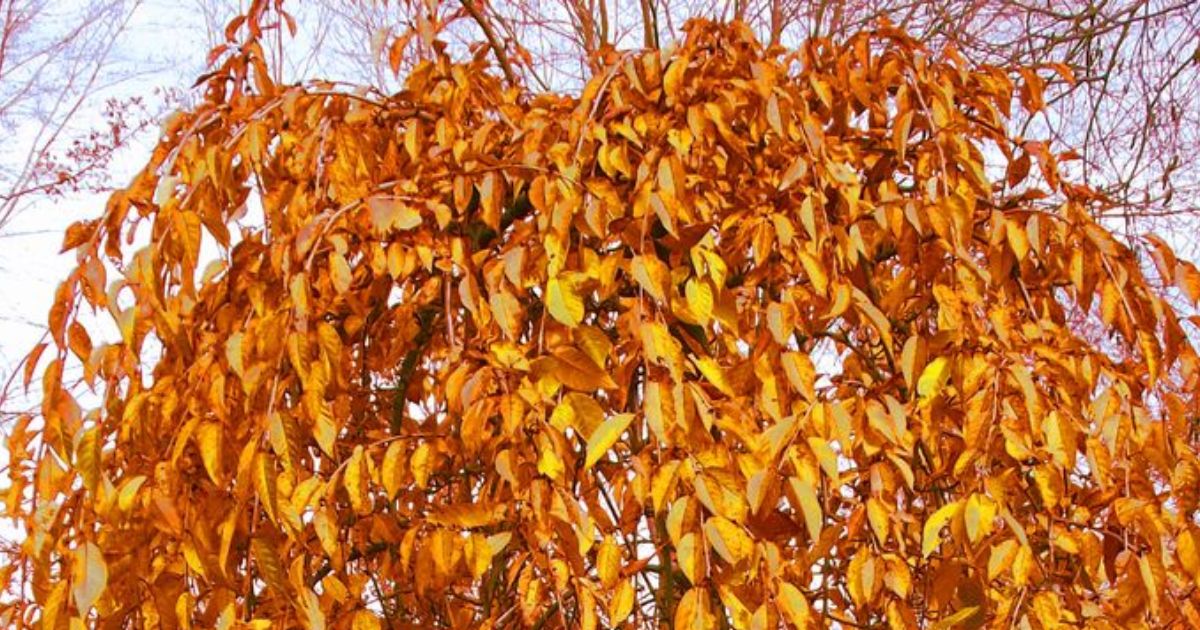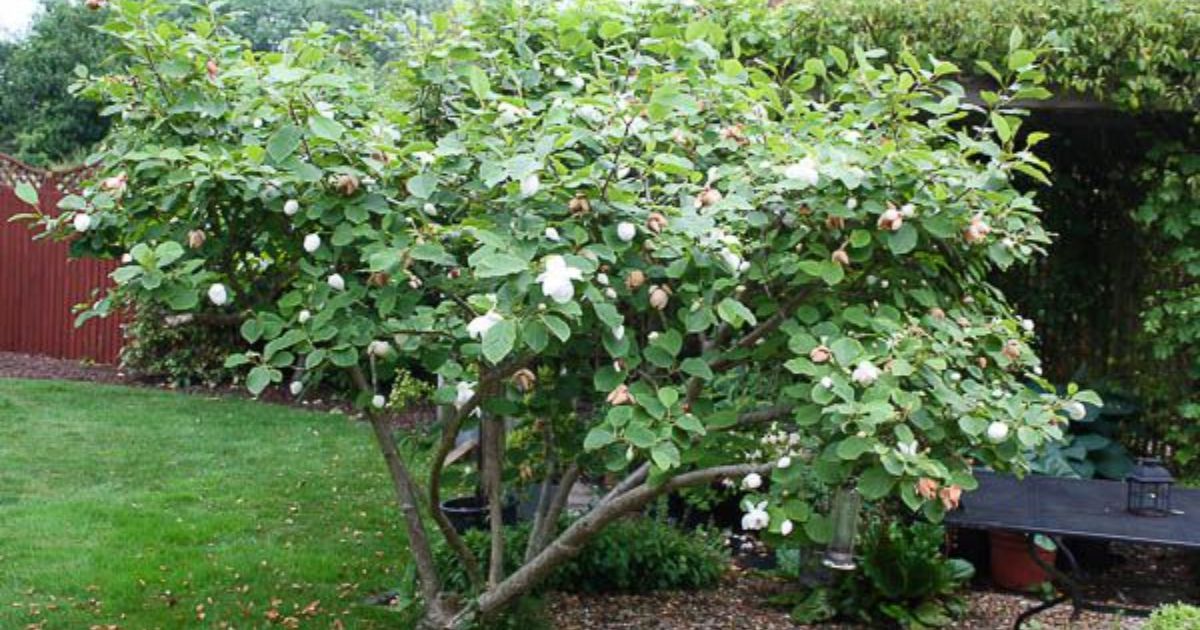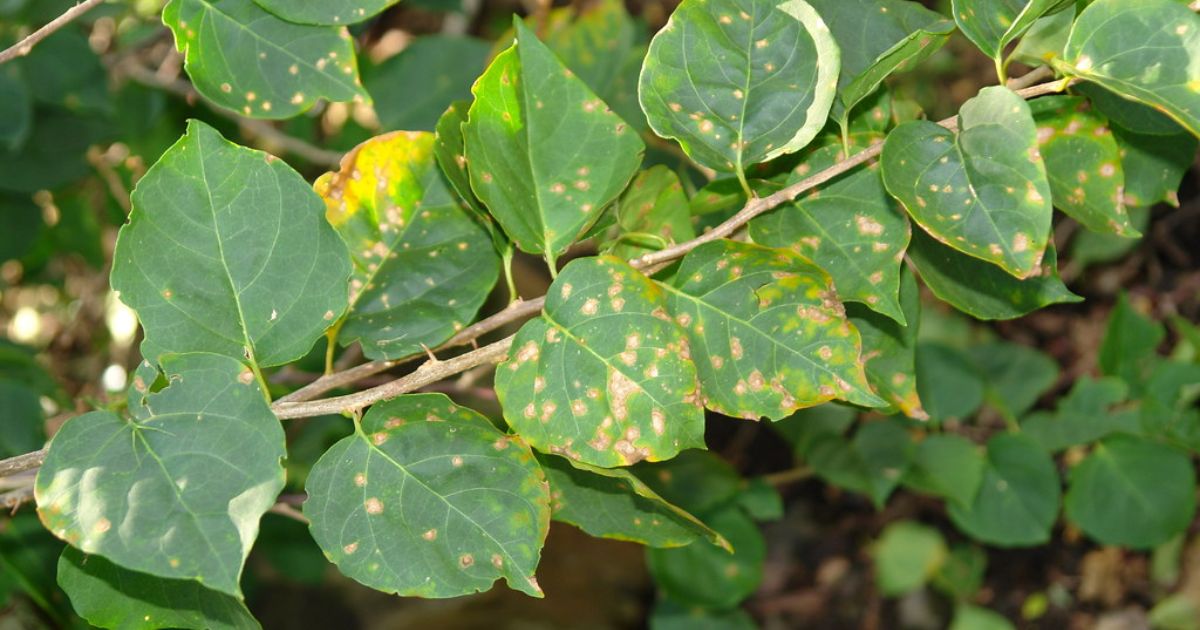If you’re a coffee lover and a gardening enthusiast, you might be surprised to learn that your daily cup of joe can benefit your plants, too! Instead of tossing used coffee grounds in the trash, you can repurpose them as a natural fertilizer, compost booster, and pest repellent. But how do you use coffee grounds effectively without harming your plants? In this guide, “How to Use Coffee Grounds for Plants: A Gardener’s Guide,” we’ll explore the best ways to incorporate coffee grounds into your garden, their benefits, and common mistakes to avoid.
Nitrogen and other vital elements are abundant in coffee grounds, potassium, and phosphorus, making them an excellent soil amendment. But not every plant reacts favorably to coffee grounds; improper use can lead to mold growth or soil compaction. Whether you want to enrich your compost, create a homemade fertilizer, or keep pests away, this guide will provide step-by-step instructions on using coffee grounds effectively to promote healthy plant growth. Let’s dive in!
Benefits of Using Coffee Grounds for Plants
Coffee grounds are more than just kitchen waste—they’re a powerhouse of nutrients and organic matter that can promote the development of robust plants and enhance the quality of the soil. When used correctly, coffee grounds can enhance your garden’s ecosystem, making it more fertile and resilient. Here are some of the key benefits of using are coffee grounds good for plants:
1. Enriches Soil with Nutrients
One of the most significant advantages of coffee grounds is their nutrient content. They are rich in nitrogen, essential for leafy growth, and potassium and phosphorus, contributing to root development and overall plant health. These nutrients help boost plant vitality, making coffee grounds a natural and sustainable alternative to chemical fertilizers. When added to soil, they gradually release nutrients, provide your plants with a consistent supply of food.
2. Improves Soil Structure
Coffee grounds also improve soil texture, making it more aerated and well-draining. Their fine particle size helps break up heavy, compressed dirt that permits roots to take in and breathe water more efficiently. For sandy soil, coffee grounds for plants increase water retention, preventing excessive drainage. By improving soil structure, coffee grounds create a healthier environment where beneficial microbes and earthworms can thrive, further enhancing plant growth.
3. Acts as a Natural Mulch
Applying a thin layer of coffee grounds around plants can work as a natural mulch, aiding in weed suppression and soil moisture retention. Mulching with coffee grounds helps keep the soil cool, reducing evaporation and preventing plant roots from drying. Additionally, coffee grounds can create a barrier that makes it harder for weeds to sprout, reducing the need for chemical herbicides. However, mixing coffee grounds with other organic matter like wood chips or dried leaves is essential to prevent compaction.
4. Pest Control
Coffee grinds can also be used as an all-natural bug repellent. Their pungent aroma and texture help repel common garden pests like slugs, snails, and ants. These pests dislike the acidity and rough texture of coffee grounds, reducing the possibility that they will get inside your plants. Sprinkling coffee grounds around plants creates a protective barrier, reducing the need for chemical pesticides. However, using them in moderation is essential, as excessive amounts can alter soil pH.
5. Enhances Composting
Coffee grinds can be added to your compost pile speed up decomposition and improve compost quality. Coffee grinds are regarded as a type of green compost because of their high nitrogen content, which helps break down organic matter faster. When balanced with brown compost materials like dry leaves, straw, or shredded paper, coffee grounds good for plants contribute to a nutrient-rich compost that can fertilize your garden naturally. Additionally, coffee grounds encourage microbial activity, creating a thriving compost environment that benefits plants. growing asparagus in raised beds
By understanding and utilizing these benefits, coffee grinds can be used to their full potential in your garden while reducing waste. Whether you use them to fertilize soil, improve structure, or keep pests at bay, coffee grounds are valuable to any gardener’s toolkit.
How to Use Coffee Grounds in the Garden
The addition of coffee grinds to your landscape a great idea, but they must be used correctly to maximize their benefits while avoiding potential issues. Here are the best ways to used coffee grounds for plants in your garden effectively:
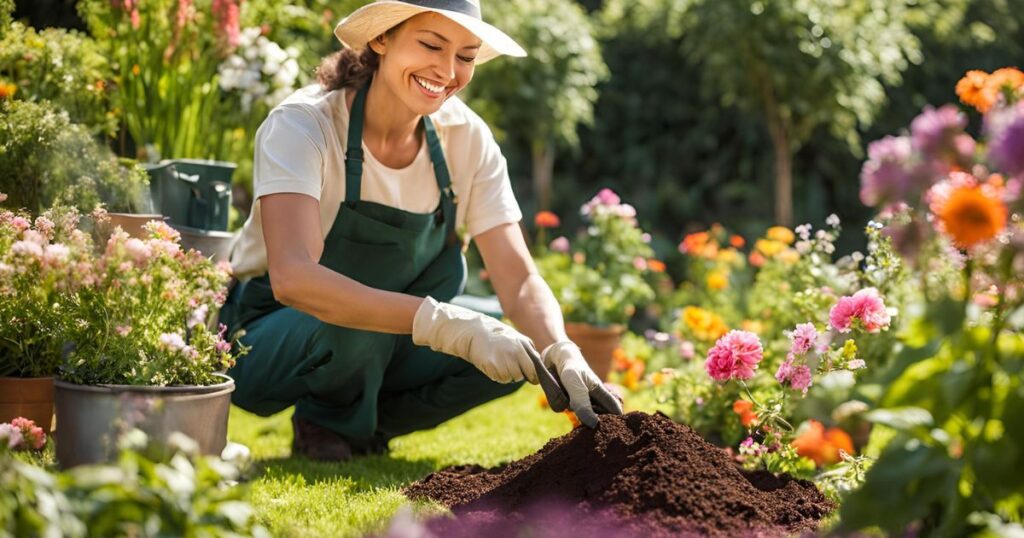
1. Mixing Coffee Grounds into the Soil
Among the simplest use for coffee grinds is by incorporating them directly into the soil. This method helps improve soil structure, adds organic matter, and enriches the soil with essential nutrients like nitrogen.
How to do it:
- Sprinkle a thin layer (about ½ inch or less) of coffee grounds over the soil.
- Use a garden fork or rake to mix the grounds into the top few inches of soil to prevent compaction.
- Water the area lightly to help the grounds integrate with the soil.
Recommended quantity:
- Avoid using more than 20% coffee grounds in your soil mix, as excessive amounts can create a barrier that repels water and air.
- Mix coffee grounds with compost or garden soil for potted plants to prevent root rot and nutrient imbalances.
2. Using Coffee Grounds as Mulch
You can use coffee grinds as a natural mulch by retaining moisture, regulating soil temperature, and suppressing weeds. However, they should be used correctly to avoid potential issues.
How to do it:
- Apply a thin layer (about ¼ inch thick) around plants.
- Avoid piling up thick layers; coffee grounds can compact and create a water-resistant crust.
- Mix coffee grounds with other mulch materials like shredded leaves, bark, or straw for best results.
Why too much can cause problems:
- Mold Growth – Coffee grounds hold moisture, creating an environment for mold or fungal growth.
- Excessive Water Retention – Too much coffee grounds can trap water, potentially leading to root rot.
- Nutrient Imbalance – Using only coffee grounds as mulch can cause certain plants to find the soil too acidic.
3. Adding Coffee Grounds to Compost
Composting coffee grounds for plants is one of the best ways to balance nitrogen levels in your compost pile and accelerate decomposition. Coffee grounds are regarded as a type of green compost, meaning they are nitrogen-rich.
How to do it:
- Put spent coffee grinds in your compost container in moderation (at least 20% of the total compost).
- Balance with brown materials (dry leaves, cardboard, straw, or sawdust) to maintain a healthy compost mix.
- Turn the compost regularly to aerate and speed up decomposition.
Why coffee grounds should be mixed with other compostable items:
- Pure coffee grounds can become compacted, reducing airflow in the compost pile.
- A good balance of greens (coffee grounds, fruit scraps) and browns (dry leaves, paper, wood chips) ensures efficient composting and prevents foul odors.
4. Making a Coffee Grounds Fertilizer
If you prefer liquid fertilizer, is coffee grounds good for plants can create a nutrient-rich tea for your plants. This method provides a gentle nitrogen boost without overloading the soil.
How to do it:
- Fill a 5-gallon bucket with water.
- Add about 2 cups of used coffee grounds.
- Let it steep for 24–48 hours to extract nutrients.
- Strain out the grounds and use the liquid to water your plants.
Best plants for coffee grounds fertilizer:
- Acid-loving plants like blueberries, azaleas, roses, and hydrangeas.
- leafy greens like lettuce, kale, and spinach.
- Houseplants like pothos and African violets.
5. Using Coffee Grounds for Pest Control
Coffee grounds can be a natural deterrent against common garden pests, especially slugs, snails, and ants. Their abrasive texture and caffeine content make them effective barriers.
How to do it:
- Dry coffee grinds should be scattered surrounding plant bases to establish a physical barrier.
- Mix coffee grounds with citrus peels to repel cats and rodents.
- Scatter coffee grounds near ant trails to disrupt their scent paths and discourage infestations.
Precautions to avoid harming beneficial insects:
- Avoid excessive use, as caffeine may negatively affect earthworms and beneficial insects.
- Coffee grounds should be used sparingly and in combination with other natural pest deterrents like diatomaceous earth.
When applied correctly, coffee grounds can enhance soil health, boost plant growth, and deter pests in the garden. Moderation is key whether you mix them into the soil, compost them, or use them as mulch. By adhering to these recommended procedures, are coffee grounds good for plants you can optimize the advantages of coffee grounds while ensuring a thriving, balanced garden. how do you fertilize a rose
Best Plants That Love Coffee Grounds
Not all plants benefit from coffee grounds, but certain species thrive when they receive the extra nutrients and acidity that coffee provides. Here are some of the best plants that love coffee grounds:
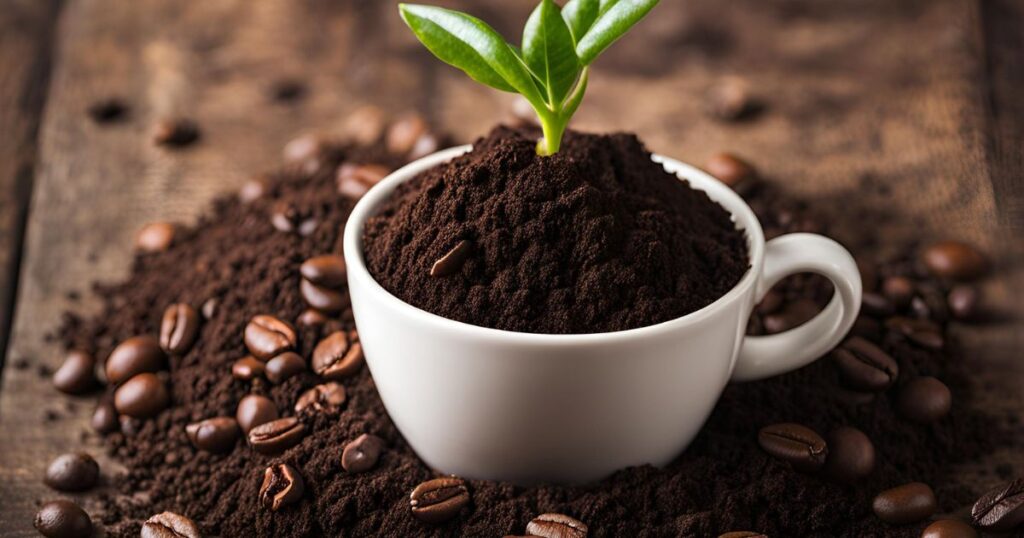
1. Acid-Loving Plants
Coffee grounds are slightly acidic, making them a significant natural amendment for plants that prefer acidic soil. These plants thrive in a soil pH between 5.5 and 6.5; coffee grounds can help maintain those levels. what fruit can boost wetness?
Azaleas
Azaleas require rich, well-draining, acidic soil, what plants like coffee grounds and coffee grounds help enhance their growth by adding nitrogen and organic matter. Putting a little coating around the base of azaleas can improve soil aeration and encourage healthier blooms.
Rhododendrons
Similar to azaleas, rhododendrons flourish in acidic and organic-rich soil. Coffee grounds provide a steady supply of nutrients that support lush foliage and vibrant flowers.
Hydrangeas
The capacity of hydrangeas to change color in response to soil pH is one of its distinctive features. Coffee grinds can increase the acidity of the soil, resulting in blue blossoms rather than pink ones. This is a popular trick among gardeners who prefer blue hydrangea flowers.
Blueberries
Blueberries thrive in highly acidic soil (pH 4.5 to 5.5). Fertiliser roses help maintain this ideal acidity while adding essential nutrients like nitrogen, potassium, and magnesium, which promote strong root development and increased fruit production.
Roses
Roses love nitrogen-rich soil, and coffee grounds provide a natural slow-release nitrogen boost that enhances leaf growth and flower production. Sprinkling used coffee grounds around rose bushes can improve soil texture and encourage lush, healthy blooms.
2. Vegetables That Benefit from Coffee Grounds
While not all vegetables thrive with coffee grounds, certain root crops and fruiting plants benefit from the extra nutrients and improved soil structure.
Carrots
Carrots prefer light, well-drained soil, and coffee grounds help loosen compacted earth, making it easier for the roots to develop. Mixing coffee grounds into the soil before planting can also boost nitrogen levels, leading to healthier carrot growth.
Radishes
Like carrots, radishes grow best in well-aerated, nutrient-rich soil. Coffee grounds help retain moisture while adding organic matter, encouraging quick and even radish growth. How to Attract Common British Garden Birds to Your Garden
Tomatoes
Tomatoes are heavy feeders that require nitrogen, potassium, and phosphorus—all of which are found in coffee grounds. Nevertheless, they like slightly acidic soil over neutral soil, so it’s best to mix coffee grounds with compost rather than apply them directly to avoid making the soil too acidic.
3. Houseplants That Love Coffee Grounds
Some indoor plants also benefit from the rose plant perferred, Types of Organic Mulch and Their Benefits particularly those that thrive in slightly acidic soil conditions.
Snake Plant (Sansevieria)
Snake plants are low-maintenance houseplants that benefit from the slow-release nitrogen in coffee grounds. However, coffee grounds should be used sparingly to avoid water retention, which could lead to root rot.
Pothos
Pothos plants thrive in slightly acidic soil, making coffee grounds a great occasional supplement. Adding a small amount to the potting mix can promote healthy, vibrant leaves.
African Violets
African violets prefer slightly acidic soil rich in organic matter. Coffee grounds help improve soil texture and provide essential nutrients for continuous flowering.
Final Tips for Using Coffee Grounds on Plants
- Always use moderate amounts of coffee grounds to avoid excessive acidity.
- Mix coffee grounds with compost before applying them to the soil for better nutrient balance.
- Ensure proper drainage when using coffee grounds on potted plants to prevent mold or fungal growth.
- Monitor plant response—if leaves turn yellow or growth slows, reduce coffee ground usage.
By incorporating coffee grounds correctly, you can enhance plant health, improve soil quality, and enjoy a thriving garden.
Plants That Don’t Like Coffee Grounds
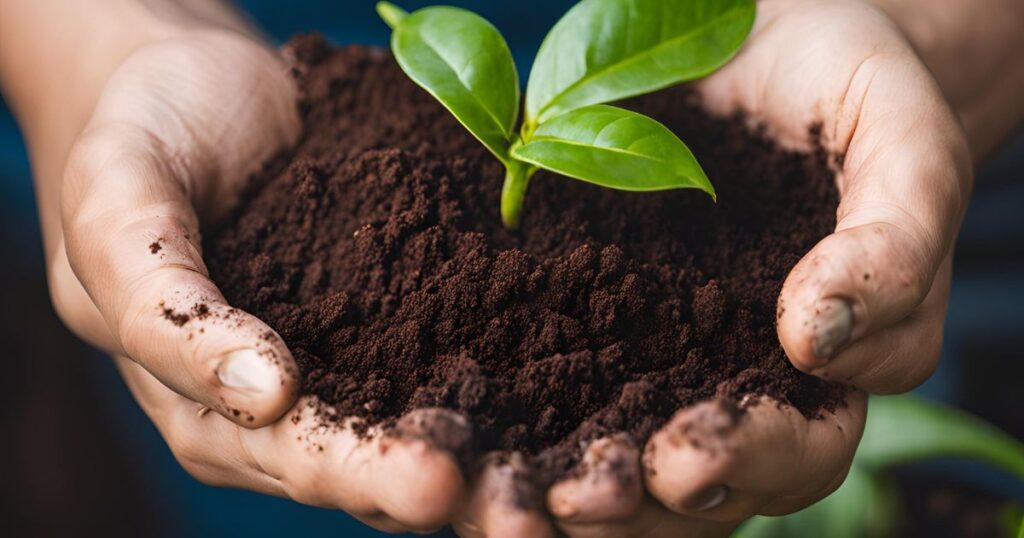
While coffee grounds can benefit many plants, they are unsuitable for species that prefer alkaline or neutral soil. Plants like lavender, sage, and rosemary thrive in well-drained, slightly alkaline conditions, and adding can u compost coffee grounds can make the soil too acidic for their growth. These Mediterranean herbs require low nitrogen, sandy soils, and excess moisture retention from coffee grounds, which can lead to root rot. If you’re growing alkaline-loving plants, it’s best to avoid using coffee grounds or limit their use to compost, where they can break down more gradually. banana flower side effects
Which Plants Do Not Like Coffee Grounds?
Coffee grounds are often seen as an excellent natural fertilizer for many plants, but not every plant benefits. While coffee grounds are rich in nitrogen, Best Fertilize Tomatoes for the Ultimate Bumper Crop they also contain acids and can sometimes be too intense for particular species.
1. Acid-Loving Plants Some plants prefer neutral to alkaline soil and may not appreciate the acidity in coffee grounds. Examples include:
- Lavender: Lavender thrives in well-drained, slightly alkaline soil, and the acidity from coffee grounds can hinder its growth.
- Asparagus: This plant prefers slightly alkaline soil and may suffer from the acidity of coffee grounds, leading to poor growth or even root damage.
2. Some vegetables don’t fare well with coffee grounds. These include:
- Carrots: In highly acidic soils, carrot roots may become stunted or misshapen, making coffee grounds a poor addition to their growing environment.
- Beets: Like carrots, beets grow best in neutral to slightly alkaline soil and might not tolerate the acidity of coffee grounds.
3. Plants Sensitive to Over-Fertilization While coffee grounds are rich in nitrogen, too much can overload the soil. Plants like:
- An excess of nitrogen can negatively impact cucumbers and tomatoes, leading to poor fruiting or an imbalance in nutrient uptake.
In conclusion, even though coffee grounds can benefit a variety of plants, it’s essential to use them selectively and avoid applying them to those sensitive to acidity or excessive nitrogen.
Conclusion
Coffee grounds are a versatile and eco-friendly way to enrich your garden while reducing waste. When used correctly, coffee grounds offer multiple benefits, from improving soil structure and adding essential nutrients to acting as a natural mulch and pest deterrent. However, it’s necessary to apply them in moderation, whether by mixing them into the soil, adding them to compost, or creating a DIY fertilizer. Overuse can lead to excessive acidity and poor drainage, so constantly monitor your plants’ response.
By following the tips in this guide, coffee grinds can be used to their full potential in your garden while ensuring your plants get the nourishment they need. Whether growing acid-loving flowers, nutrient-hungry vegetables, or vibrant houseplants, this gardener’s guide to using are coffee grounds compostable will help you cultivate a healthier and more sustainable garden.
FAQ
Can coffee grounds harm plants?
Yes, if misused. Because coffee grinds contain a lot of nitrogen might make the soil too acidic for specific plants. Too much can cause moisture retention issues, leading to mold growth and poor drainage. To avoid this, constantly mix coffee grounds with compost or soil and apply them in moderation.
How often should I use coffee grounds?
It’s best to use coffee grounds sparingly, about once every two to four weeks. They can be added regularly for composting but should be balanced with brown materials like dry leaves or paper to maintain a proper carbon-to-nitrogen ratio.
Do used coffee grounds still have caffeine?
Yes, but in smaller amounts. While most of the caffeine is extracted during brewing, trace amounts remain on the grounds. Some studies suggest caffeine may inhibit plant growth, so avoiding overuse is essential, especially on seedlings and sensitive plants.
Can I use coffee grounds on all plants?
No, not all plants benefit from coffee grounds. Acid-loving plants like blueberries, hydrangeas, and azaleas thrive with them, while alkaline-soil lovers like lavender, sage, and rosemary may struggle. Always check your plant’s soil pH preference before adding coffee grounds.

